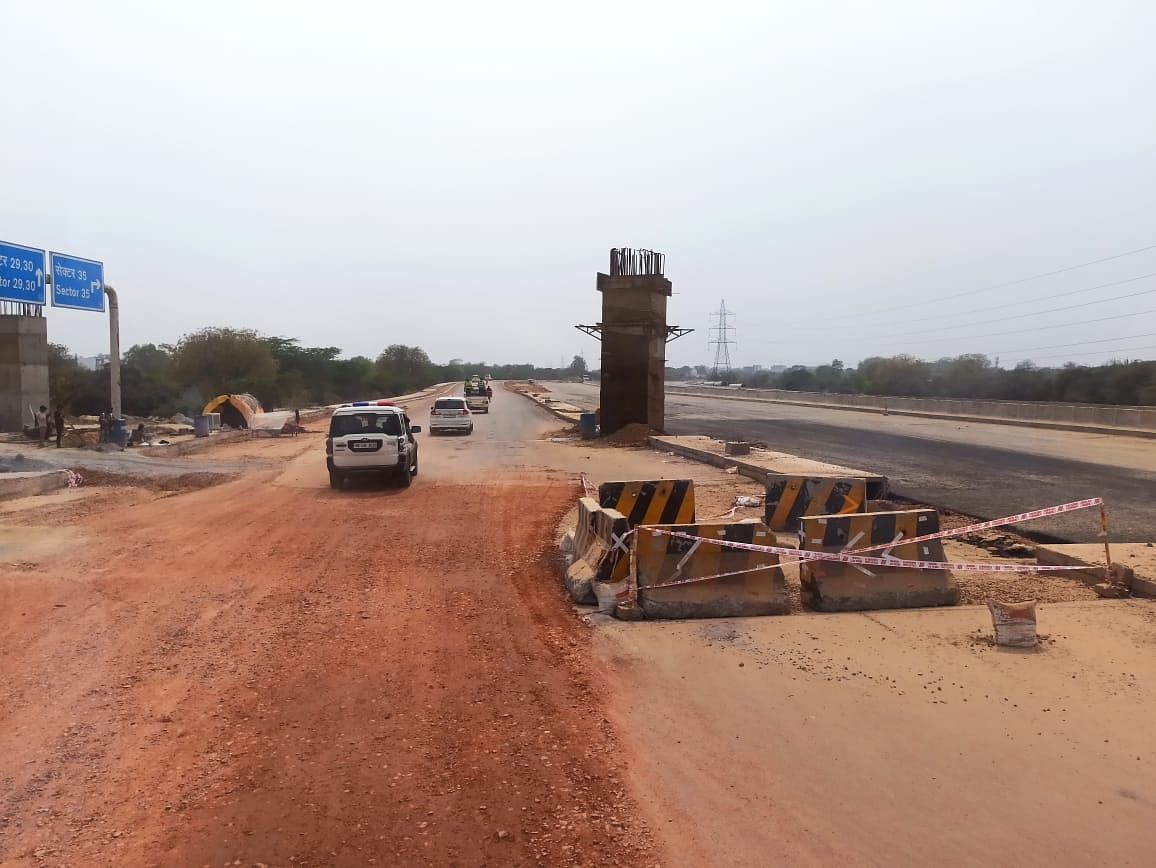The access-controlled highway will be a faster link for traffic from Gurugram, IGI airport, South and West Delhi — heading towards Chandigarh and beyond.
Aiming at diverting vehicular traffic inside the capital city and decongestion on Delhi roads, the National Highways Authority of India (NHAI) has expedited the work on the main carriageway of six-lane Urban Extension Road-II (UER-II).
The UER-II, also known as the capital’s Third Ring Road, is expected to be completed by September, and will reduce the travel time between Delhi-Gurugram expressway and Delhi-Chandigarh highway to barely half an hour.
Besides, the NHAI is also using municipal waste from landfill sites during the construction of highways — an-environment-friendly step in the direction to reduce the huge garbage pile-up at Ghazipur, Okhla and Bhalswa.
“We are developing UER-II as a component of the Delhi Decongestion Plan. The project involves the construction of UER-II in five different packages with costs of Rs 7,716 crore. As part of this project, we are utilizing 20 lakh tons of plastic garbage sourced from the Ghazipur Landfill,“ Union Road Transport and Highways Minister Nitin Gadkari said after reviewing the progress of the project.
The access-controlled highway will pass through areas including Najafgarh, Nanglio, Shyam Vihar and Kanjhawla, and it will be a faster link for traffic from Gurugram, IGI airport, South and West Delhi — heading towards Chandigarh and beyond.
Currently, such traffic needs to take the Dhaula Kuan stretch, the ring road and outer ring road, which takes longer and contributes to congestion and air pollution.

“Nearly 60 per cent work of the project has been completed. We will be able to complete this in the next six months and inaugurate it,“ Gadkari said.
Till now nearly Rs 5,000 crore has been spent in the 76-km-long road project.
The Minister said the project was conceived way back in 2000, as part of the Delhi Master Plan, but there was hardly any progress. He added that since it was not a national highway (NH), the central government could not take up work.
After notifying it as a national highway, the highways authority has undertaken the project, which is a “life line for Delhi”, Gadkari said.
The Minister said the project will reduce the traffic load on Delhi roads, including the ring road and outer ring road as vehicles coming from Jaipur side and also from Chandigarh end can use it as a bypass and it will help reduce air pollution as well.
The project also includes two links from the main highway. While a 29.6 km link will provide connectivity to Bawana Industrial Area, the other 7.3 km connectivity will be for Bahadurgarh Bypass. These links will be of four lanes each.
NHAI has so far used around 9 lakh tonnes of inert waste materials in national highway construction in Delhi — 7 lakh tonnes in UER-II and 2 lakh tonnes on DND-Sohna link of Delhi-Mumbai Expressway.
With the use of garbage as construction materials, Gadkari said, “We will work towards flattening the garbage mountains at three places in the next 18 months.“


